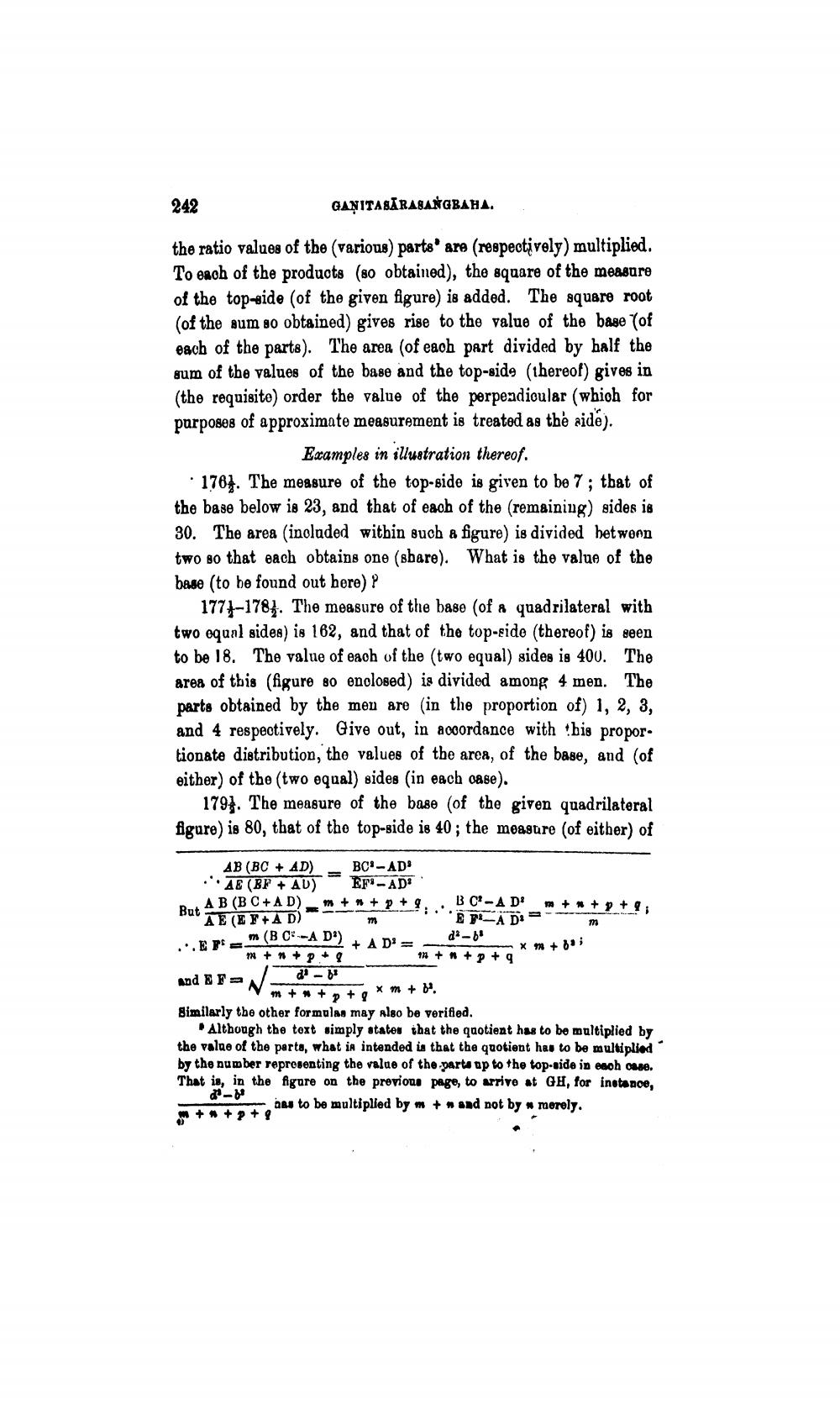________________
242
GANITASĀRASANGBAHA.
the ratio values of the various) parts are respectively) multiplied. To each of the products (so obtained), the square of the measure of the top-side (of the given figure) is added. The square root (of the sum so obtained) gives rise to the value of the base of each of the parts). The area (of each part divided by half the sum of the values of the base and the top-side (thereof) gives in (the requisite) order the value of the perpendicular (which for purposes of approximate measurement is treated as the side).
Examples in illustration thereof. · 1764. The measure of the top-side is given to be 7 ; tbat of the base below is 23, and that of each of the remaining) sides is 30. The area (inoladed within such a figure) is divided het wonn two so that each obtains one (share). What is the value of the base (to be found out here)
1774-1781. The measure of the base (of a quadrilateral with two equnl sides) is 162, and that of the top-ride (thereof) is seen to be 18. The value of each of the two equal) sides is 400. The area of this (figure so enolosed) is divided among 4 men. The parts obtained by the men are in the proportion of) 1, 2, 3, and 4 respectively. Give out, in acoordance with this propor. tionate distribution, the values of the area, of the base, and (of either) of the two equal) sides in each case).
1797. The measure of the base (of the given quadrilateral figure) is 80, that of the top-side is 40; the moasure (of either) of
EPS
(BC-A 02
AB (BC + AD) - BC-AD ..AE (BP + AD) - EF-AD
AB (B C + AD).m + + + P + 9. But a
BC-AD + + + + WAE (LY+AD)
m
'EPCADI--- m (BC-A D') + AD' =
de-16 +* + P
11 +* + P + 4 dt - J And Fav.
V + + + xm + 0. Similarly the other formula, may also be verified.
Although the text simply states that the quotient has to be multiplied by the value of the parts, what is intended is that the quotient has to be multiplied by the number representing the value of the parts up to the top-side in each one. That is, in the figure on the previous page, to arrive at GH, for instance,
has to be multiplied by m + * and not by merely.




